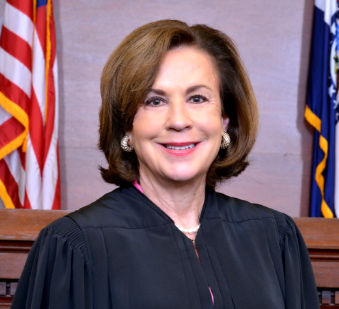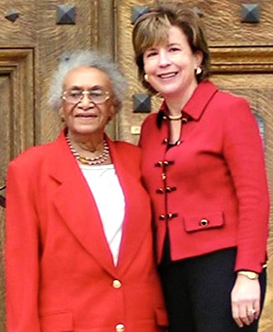Reflections of Missouri Chief Justice Mary R. Russell
As we transition from Black History Month to Women’s History Month, I am struck by how recent that history is still within our legal profession and our courts. I am proud of the advancements in both, as our bench and bar are moving closer toward better reflecting the diversity of the people of our state, but I am saddened by the barriers that have hindered talented lawyers who came before me because of their race or gender.

Take, for example, Frankie Freeman. She was ahead of her time, a black woman entering law school toward the end of World War II. She achieved an illustrious career spanning 50 years, becoming a true legal legend. She earned her law degree in 1947, graduating second in her class from Howard University Law School. She became involved in the civil rights movement in St. Louis, achieving landmark legal victories that helped open doors – literally and figuratively – for other African-Americans … in education, in housing, in employment and in life. Her jobs ranged from municipal judge to being the first female member of the U.S. Commission on Human Rights. Her activities ranged from leading a variety of local organizations, including the Urban League of Metropolitan St. Louis, to forming a bipartisan citizens commission to monitor the federal government’s enforcement of laws barring discrimination. Her work created opportunities for future generations she herself never had.
She visited our Court in 2009. At age 92, she was still sharp as a tack and full of wit and wisdom. I insisted she sit on our bench and try on my robe for a photo. If she had been born 50 years later, she would have had the opportunity to serve as a judge on our state’s high court if she wanted.
I have had the honor to serve with the Supreme Court of Missouri’s first three (and only) African Americans judges. The first two were men – former Chief Justices Ronnie L. White and George W. Draper III –and were colleagues of mine on the court of appeals, too. We have many tour groups visiting our courts, but I always will remember one particular group of school children. Several judges – including Judge White and me – talked with the children. Most were African American. They were attentive to us all, but each time Judge White said something, their eyes just lit up and they hung on his every word. I quickly realized they saw themselves in Judge White, and through him, saw themselves in possible careers as lawyers or judges.
Soon after Judge Draper was elevated to the Supreme Court, I invited him to lunch at a restaurant on High Street in uptown Jefferson City. Over lunch, he told me how different his father’s dining experience at restaurants had been some 50 years earlier. His dad, also a lawyer, had worked as an assistant attorney general under Tom Eagleton in the early 1960s. But when Judge Draper’s dad and Eagleton walked uptown for lunch in Jefferson City, restauranteurs back then refused to serve Mr. Draper in their establishments because he was Black. Today, I can’t imagine not being able to have lunch with my friends and colleagues because of the color of their skin.
Judge Draper was our chief justice at the time of the COVID outbreak. Although our Court remained open, most of the judges, including me, appeared in the courtroom remotely. Not Judge Draper. He was the only judge in the courtroom for every docket during the early months of the pandemic when some of us were trying to avoid public contact. He was the face of our Court and led us through uncertain times.
A few years ago, a new colleague joined us – Judge Robin Ransom, who has the distinction of being the first African American woman to serve on Missouri’s high court. She likes to remind people, however, that when she looks in the mirror, she just sees Robin. A native St. Louisan, she is one generation removed from her father, who was forced to work in segregated conditions. As a firefighter, he had to eat, drink and sleep separately from the white firefighters alongside whom he worked to put out fires. I am proud his daughter is now one of my officemates in the Supreme Court Building.
I am so glad my colleagues’ experiences are different today from those of their parents. And we have come a long way from the time when people of color and women saw no one who looked like them wearing a judge’s robe. It is easier to have confidence in the courts when you believe the judges know what it is like to walk in your shoes (or heels).

I hope the achievements of leaders like Frankie Freeman and Judges White, Draper and Ransom help inspire more young Missourians to consider careers in the law. And I look forward to the day when we can welcome new judges on our Court without mentioning their race or gender.
